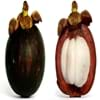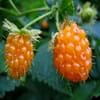Health Benefits
Cancer prevention, Heart care
Anti-oxidant properties, Beneficial in curing fever, Cancer prevention, Heart care, Reduces nervous tension
General Benefits
Anti oxidant properties, Boosts immune system, Digestive aid, Improves blood circulation, Maintains healthy cholesterol level, Strengthens bones
Anti-inflammatory properties, Boosts immune system, Controls blood pressure, Digestive aid, Eye care, Fights against infections, Helps in weight loss, Improves blood circulation
Skin Benefits
Anti-aging benefits, Reduces wrinkles, Skin rejuvenation
Anti-aging benefits, Brightens and lightens complexion, Reduces wrinkles
Hair Benefits
Protects hair
Good conditioner, Promotes longer and healthier hair, Treatment of dandruff
Allergy Symptoms
NA
Abdominal pains, Anaphylaxis, Inflammation
Side Effects
Allergic reaction
Affects blood glucose levels, Decrease in blood sugar levels, Coagulation
Best Time to Eat
As a snack in the late afternoon, Don't consume at night and before bed, Eat the fresh ones, avoid mixing with any other foods, don't eat after meal., Morning time (before lunch)
Along with meal, As a snack in the late afternoon, Don't consume at night and before bed, Eat the fresh ones, avoid mixing with any other foods, don't eat after meal.
Vitamin B1 (Thiamin)
Not Available
Vitamin B2 (Riboflavin)
Not Available
Vitamin B3 (Niacin)
Not Available
Vitamin C (Ascorbic Acid)
Calories in Fresh Fruit with Peel
Calories in Fresh Fruit without Peel
Not Available
Not Available
Calories in Frozen Form
Not Available
Not Available
Calories in Dried Form
Not Available
Calories in Canned Form
Not Available
Not Available
Type
Berry
Berry, Tree fruit
Season
Winter
Autumn, Winter
Varieties
Not Available
Early Golden, John Rick, Miller, Woolbright and Ennis
Color
Orange, Pink, Yellow
Orange, Red, Yellow
Inside Color
Orange
Yellow
Origin
Arctic Tundra
Eastern United States
Soil Type
Loam, Well-drained
Sandy loam, Well-drained
Climatic Conditions
Cold, Warm
Can tolerate wide range of climates, Sunny
Facts about
- Cloudberry is also called as bakeapple, knotberry , knoutberry, aqpik or low bush salmonberry.
- In Nordic countries, cloudberries are used to make traditional liqueurs.
- It is said that formation of seeds inside the persimmon fruit shows what type of winter is coming(type of snow).
- There are about 2000 varieties of this fruit.
- The American persimmon has another name 'Possumwood'.
Top Producer
Norway
China
Other Countries
Canada, Denmark, Finland, Iceland, Sweden, United States of America
Azerbaijan, Brazil, Costa Rica, Japan, Korea, Pakistan
Top Importer
Norway
United States of America
Top Exporter
Finland
United States of America
Botanical Name
Rubus chamaemorus
Diospyros virginiana
Synonym
Not Available
Not Available
Subkingdom
Tracheobionta
Tracheobionta
Division
Magnoliophyta
Magnoliophyta
Class
Magnoliopsida
Magnoliopsida
Subclass
Rosidae
Dillenhidae
Family
Rosaceae
Ebenaceae
Species
R. chamaemorus
D. virginiana
Generic Group
Not Available
Not Available
Compare Cloudberry and American Persimmon
It is important compare Cloudberry and American Persimmon as both the fruits have a different nutritional value. Their comparison can be done on the basis of their vitamin and mineral content, calories, benefits as well as characteristics, making it easier for us to choose the best fruit for our diet. Their general health benefits are as follows:
Cloudberry Benefits: anti oxidant properties, boosts immune system, digestive aid, improves blood circulation, maintains healthy cholesterol level and strengthens bones.
American Persimmon Benefits: anti-inflammatory properties, boosts immune system, controls blood pressure, digestive aid, eye care, fights against infections, helps in weight loss and improves blood circulation.
Fruits are also used as a remedy for various hair problems. The hair benefits of Cloudberry are: protects hair and hair benefits of American Persimmon are: good conditioner, promotes longer and healthier hair and treatment of dandruff. Some fruits are known to cause allergic reactions. The allergy symptoms of first fruit are: na and the symptoms of second fruit are: abdominal pains, anaphylaxis and inflammation. Get sorted Cloudberry vs American Persimmon comparison with the help of fruit comparison tool by fruitvs.com.









